Ex: http://www.counter-currents.com
Left/Right dichotomies in the representation of female militants in the movies The Baader Meinhof Complex (2008) and A Student named Alexander (2011).
‘Although typically villainous, or at least morally ambiguous, and always associated with a sense of mystification and unease, femme fatales have also appeared as heroines in some stories . . .’
— Mary Ann Doane
From the Levantine Lilith to the Celtic Morgan Le Fay; and from Theda Bara’s vamp in Hollywood’s A Fool There Was to Eva Green in Sin City: A Dame to Kill For, the notion of the fille d’Eve tantalizes us. In sociological terms the notion of diabolic women is potent with misogyny, witchcraft and the negative aspects of anima, how woman appears to man, from the Jungian viewpoint. To take the cinematic angle, licentious dames mean box office receipts, plain and simple. Roger Vadim’s And God Created Woman (1957), starring starlet Brigitte Bardot and Jean-Jacques Beineix’s Betty Blue (1986) with Beatrice Dalle being just two cases that prove the point.
Stereotypes range from enchantress to succubus, haunting our consciousness in different guises, such as the spectral Cathy from Emily Brontë’s classic Wuthering Heights (1847) or the more malign character of Rebecca in Daphne du Maurier’s 1938 book of the same name. As Charles Baudelaire (1821-67) (1), Once mused, ‘The strange thing about woman — her pre-ordained fate — is that she is simultaneously the sin and the Hell that punishes it’. Indeed, a whole academic industry has grown up deconstructing such iconography with writers like Toni Bentley’s Sisters of Salome (2002); Bram Dijkstra’s Idols of Perversity: Fantasies of Feminine Evil in Fin-de-Siècle Culture (1986); and Elizabeth K. Mix’s Evil by Design: The Creation and Marketing of the Femme Fatale in 19th-Century France (2006) leading the way.

Baudelaire’s own magnum opus Les Fleurs du Mal (1857) epitomizes the dichotomy perfectly. The schizophrenia embodied in his poetic creations, Jean Duval (Black Venus) and Apollonie Sabatier (White Venus), both mirroring and reinforcing some male fantasies about women’s sexuality in the closing decades of the nineteenth century. The dialectics of Serpent Culture and Snake Charmer sensuality, so beautifully carved in Auguste Clesinger’s (picture here above) writhing milk white statue Woman Bitten by a Snake (1847), a representation of Apollonie Sabatier currently on display in the Musée d’Orsay, raises the question, is she squirming in agony or riding a paroxysm of pleasure from the venomous bite?
Moving beyond the arts, literature and film to the political milieu? What evidence do we have for Femme Fatale’s within the Left/Right dichotomy? There is certainly a colorful cast of charismatic characters to choose from: Inessa Armand, Rosa Luxemburg, Clara Zetkin, Jiang Quing, Bernardine Dohrn, and Angela Davis to name but a few on the left-side. Unity Mitford, Savitri Devi, Alessandra Mussolini, Beate Zschape, Yevgenia Khasis, and Marine Le Pen, as examples from the right side of the aisle.
It is my intention to dismiss empathetic documentaries like Confrontation Paris, 68, The Weather Underground (2002) and hatchet-job investigative journalism like Turning Point’s Inside the Hate Conspiracy (1995) about America’s The Order without further comment. Instead arguing that there are few, if any, historically accurate, unbiased and insightful fictional or factional celluloid representations of female (or for that matter male) political militants in circulation. Instead, what we are served up are predictable stereo-types and clichéd cartoonesque parodies, completely aligned with the liberal left Euro-68 ethos, wherein, a mélange of well-meaning but misguided (and always attractive) socialist idealists try to change society for the better, juxtaposed with psychopathic rightist harridans, or male sexual inadequates, portrayed as vacuous outsiders, decidedly uncool and devoid of social capital.
Indicative examples of the genre being, from the left: The Lost Honour of Katharina Blum (1975), The Underground (1976), Running on Empty (1988), What to Do in Case of Fire (2002), Baader (2002), The Dreamers (2004), Guerilla — The Taking of Patty Hearst (2005), Regular Lovers (2005), Mesrine: Killer Instinct (2008), Che (2008), The Baader Meinhof Complex (2008), The Company You Keep (2012) and Something in the Air (2013). As opposed to the more objectionable characterizations of rightists in productions like The Day of the Jackal (1973), The Odessa File (1974), The Boys from Brazil (1978), Betrayed (1988), Siege at Ruby Ridge (1996), Brotherhood of Murder (1999), and A Student named Alexander (2011).
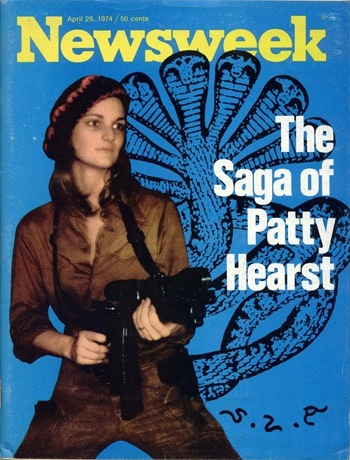 For the sake of argument I have been deliberately selective and will focus specifically on Uli Edels’s Baader Meinhof Complex and Enzo De Camillis’s fifteen minute short A Student named Alexander. Risking the approbation of cultural commentators by possibly extrapolating too general a hypothesis from too limited a sample, I nevertheless press my case, that the content, reaction and intent of both these films exemplify the paradox of Left/Right caricatures in the entertainment media.
For the sake of argument I have been deliberately selective and will focus specifically on Uli Edels’s Baader Meinhof Complex and Enzo De Camillis’s fifteen minute short A Student named Alexander. Risking the approbation of cultural commentators by possibly extrapolating too general a hypothesis from too limited a sample, I nevertheless press my case, that the content, reaction and intent of both these films exemplify the paradox of Left/Right caricatures in the entertainment media.
Recipient of 6.5 million euros from various film boards and Golden Globe and Oscar nominee in the Best Foreign Film category, The Baader Meinhof Complex, rode the wave of resurgent seventies retro, a movie filled with baby boomer nostalgia for the late sixties and early seventies. Simpler times, when idealism meant Sartre, anti-Vietnam protest, Che Guevara posters, and smoking pot in bedsits listing to the sitar music of Ravi Shankar.
The movies all-star cast includes Martina Gedeck as Ulrike Meinhof, Moritz Bleibtreu as Andreas Baader, Johanna Wokalek as Gudrun Ensslin, and Alexandra Maria Lara as Petra Schelm. All of whom had already or were soon to appear in mainstream feature films like: The Lives of Others, Run Lola Run, The Good Shepherd, Pope Joan, North Face, Control, and Downfall.
The action begins with the 1967 Schah-Besuch mass street protest in Berlin against the Shah of Iran. Mohamed Reza Pahlavi’s supporters are depicted launching an unprovoked attack on the anti-Pahlavi elements, resulting in running battles and the shooting of Benno Ohnesorg in Krumme Strasse 66, by what appears to be a reactionary police officer, Karl-Heinz Kurras, but who was in reality a card-carrying member of the Communist Party acting as an undercover operative for the East German Stasi.
We are then treated to scenes where Maoist students hold packed meetings, intercut with footage of American warplanes strafing and bombing Vietnamese peasants. Rapidly followed by ‘Red’ Rudi Dutschke (3) of 2nd June Movement fame (named after the aforementioned riot) raising his clenched fist, the Messianic leader of the Gramscian ‘Long March through the Institutions’.
Dutschke is elevated to intellectual martyr status when he is mercilessly gunned down in the street by Josef Bachmann, portrayed by actor Tom Schilling, whose cinematic appearance is clearly meant to conjure images of a Hitler Youth or a die-hard Werewolf with a chronic nervous disposition. Which is ironic given that the Baader Meinhof gang and the various later incarnations of the Red Army Faction relied so heavily on a group linked to Heidelberg University, the Sozialistisches Patientiv Kollektiv (Socialist Patient Collective), an organization that sought to convince neurotics and the insane that they were not wrong, it was the system that was wrong, and social revolution was the cure.
‘Shooting is like fucking,’ screams Baader as Bernd Eichinger’s screenplay and Rainer Klausman’s hypnotic lens combine to present a seductive and fast paced cine-orgasm of free love, role model women for Second Wave feminism, cool people smoking cigarettes in coffee shops debating Marxist dialectics, driving around in BMWs, burning department stores, shooting up road signs, Robin Hood bank robbers sunning themselves topless in PLO training camps, liberating captives in a back glow of exploding gelignite and the swashbuckling rat-a-tat of 9mm shells.
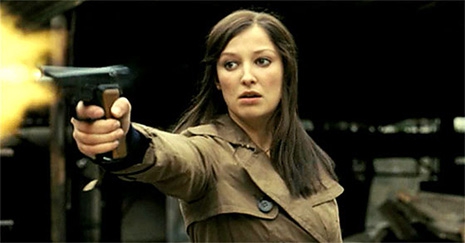
Even the capture of Baader, Ensslin, and Meinhof for their egregious crimes are contextually ambiguous. Baader, in a scene more reminiscent of the end of Butch Cassidy and the Sundance Kid (1969) than the original television footage of his stand-off with police; Meinhof, kicking and screaming in outrage, rather than the deflated, depressed, and played-out fantasist she was; and Ensslin, by pure chance, when a shop assistant notices a gun in her handbag. Another martyr is then injected into the story as Holger Meins (4) is depicted a la Bobby Sands (5), going on hunger strike and the subsequent trial in Stammheim (6), more Monty Python farce than a serious attempt to enact justice.
One is left in doubt as to where the audience’s sympathy is meant to lie. Especially, with our ever heroic protagonists making fun of the trial judges and gaining increasing support from those in attendance with their witty quips and stunning mind-games. Even The movie’s ending perpetuates the on-going myth that the ‘night of death’ was not triggered by the failure of the Mogadishu hijack (7) to negotiate their release but was in fact a pre-arranged multiple state murder made to look like simultaneous suicide. The movie culminating in a defiant cadre of young stern faced acolytes holding a graveside vigil, determined eyes set on continuing the struggle.
As a consequence, Christina Gerhardt writing in the Film Quarterly describes the movie thus: ‘During its 150 minutes, the film achieves action film momentum, bombs exploding, bullets spraying and glass shattering’. While Christopher Hitchens commenting in Vanity Fair refers to the movie’s ‘Uneasy relationship between sexuality and cruelty . . . an almost neurotic need to oppose authority’. A theme implied by Michael Bubach, son of Siegfried Bubach, the former Chief Federal prosecutor assassinated by the Red Army Faction in 1977, who’s summation of the feature pointed to the fact that the film ‘concentrates almost exclusively on portraying the perpetrators, which carries the danger that the viewer will identify too strongly with the protagonists’.
Examples of how this claim can be justified are so numerous that they would prove tedious to list. However, two personifications, beyond the central characters, stand out in particular, the first involving a chase sequence where Petra Schelm, portrayed by the beautiful Alexandra Maria Lara, is cornered and dies defiantly in a shoot-out with a horde of drone-like cops. The second is the murderous Brigitte Mohnhaupt, depicted by the stunning Naja Uhl, who is shown bedding Peter-Jurgen Boock, played by the teenage heart-throb actor Vinzenz Kiefer, before cold bloodedly slaughtering Siegried Bubach in his own home, organizing the ‘hit’ on Jurgen Ponto, Chairman of the Dresdner Bank of Directors, and the kidnap and murder of Hanns Martin Schleyer. Mohnhaupt, the leader of the second generation of the urban guerillas was also implicated in the 1981 attempt to kill NATO General Frederick Kroesen with a PRG-7 anti-tank missile. In fact, just the sort of unrepentant femme fatale we meet in her polar-opposite, the rightist Francesca Mambro in A Student Named Alexander, but who is treated in the diametrically opposite way.

In Enzo De Camillis’s 15 minute silver ribbon winning short, shown at the Roma Film Fest and lauded for its journalistic quality, the much maligned Mambro is portrayed by Valentina Carnelutti (8), who at least partially resembles Mambro. De Camillis, a blood relative of the Alexander in question, (so no conflict of interest there?) indicated his intent in making the movie was to ‘show young people what they do not know, to reflect on a period of history that should not be repeated’. So, following a showing at The House of Cinema to an audience of impressionable students, a discussion is initiated, moderated by Santo Della Volpe (9), who declares at the outset, that ‘The goal of the short is not to re-open old wounds or discussions on the years of lead (10), but to bring to light the issue of the victims that are set aside, of which we no longer speak’.
Really? Well, that is somewhat convenient given the long list of crimes committed by the Italian Brigate Rosse during the period in question. The most notorious being the ambush at Via Fani on the 16th March 1978 and the kidnap and murder of the President of the Christian Democrats, Aldo Moro. But it should also be remembered, especially given the context of De Camillis’s film, that the Left also killed activists from the right wing Italian Social Movement (MSI) and the University National Action group, like Miki Mantakas, murdered in Via Ottaviano in Rome in 1975, and Stephan and Virgilio Mattei, the sons of the MSI party District Secretary for Prati.
It is also a disingenuous claim given the vociferous presence of the Association of Families of victims of the massacre at Bologna train station of 2nd August 1980, whose demands echo down the decades through documentaries and dramas. The latter being the main event used to demonize Mambro and her then lover, now husband, Valerio Fioravanti (11). Although, they have long denied involvement in the Bologna attack, though freely admitting, like their Nuclei Armati Rivoluzionari (Armed Revolutionary Nuclei) NAR accomplices to other political killings, such as, the assassination of Judge Vittorio Occorsio (12) in 1976 and Magistrate Mario Amato (13) in 1980.
Fioravanti maintains that the bombing was the work of Libya, but the Italian government were reluctant to pursue that line of enquiry because of the state’s dependence on Libya’s oil and blamed neo-fascists instead. Mambro and Fioravanti also confessed to planning an attack on the then Prime Minister Francesco Cossiga (14), so one can hardly accuse them of hiding their intentions. When the initial 16 year prison term for Mambro was converted into house arrest in 1998, the Bologna Association’s President Paolo Bolognesi, described Mambro’s parole as ‘A disgrace. It is outrageous that this parole was granted to a terrorist who does not have the requirements, who was sentenced and has never expressed any feelings of detachment from her past’. This, despite the fact that the NAR, never claimed responsibility for the incident and there is substantive cause to believe that the Mafia Banda della Magliana gang (15) and prominent politician Licio Gelli’s (16) secretive Masonic Propaganda Due P2 Lodge (17) linked to the NATO’s Cold-War Operation Gladio architecture (18) had a hand in the incident.
The prosecution’s main witness against Mambro’s partner Fioravanti, Massimo Sparti, of the banda della Magliana, was even contradicted by his own son. ‘My father has lied about his part in the Bologna history’, he declared. Similarly the sinister presence of German terrorists Thomas Kram and Margot Frohlich, closely linked to both the PLO and Carlos the Jackal, who were in Bologna that very same day was never properly investigated. Coincidences like this and the possible link to the Ustica Massacre (19), when Aerolinea Itavia flight 870 was brought down by a missile, gave President Francesco Cossiga pause for thought, leading him to state on the 15th March 1991 that he felt the attribution of the Bologna Massacre to fascist activists may be based on misinformation supplied by the security services.
Returning to A Student named Alexander, unlike the Baader Meinhof Complex, the detail is nearly entirely on the victim, showing his cluttered bedroom, his journey by car to the art school in Piazza Risorgimento. No context is provided as to why Mambro and the NAR are robbing the Banca Nazionale on the 5th March 1982. Neither is reference made to the murder of her fellow MSI activists Franco Bigonzetti and Francesco Ciavatta, gunned down in the Acca Larentia by Left extremists, the Armed Squads for Contropotere Territorial, despite the fact that this led Mambro and her cohort to confront both their political opponents and the police in three days of shootings, stabbings and torching cars across Prenestino:
‘A few of us knew what this meant. Francesco Ciavatta was in our small circle. Our immediate reaction was shock, as if a relative had died. We looked at each other not knowing what to do. All around the city young militants flocked to us. The Italian Social Movement did not react. Kids like us were being used to keep order at meetings of Giorgi Almirante (20) , ready to take the blows and hit back . . . Acca Larentia marked the final break with the MSI . . . It could no longer be our home. For three days we shot at police and this marked the point of no return . . .’
— Francesca Mambro
Even, the circumstances of Alexander’s death are disputed. The movie depicts Mambro standing over the boy, firing into his head execution style, apparently mistaking him and his small umbrella for an armed plain clothes policeman. The counter argument is that he was killed in cross-fire as the NAR broke out of a police encirclement. A shoot out in which Mambro did not have in her possession the gun that was identified as the murder weapon and was herself very seriously wounded in the abdomen. She later recalls, hiding out in a garage, where a young doctor visits her and confirms ‘that it is only a matter of time . . . saying I could die . . .’
A discussion followed as to whether or not her compatriots should kill her there and then because she may talk under anesthetic but instead the NAR cell, led by Giorgio Vale (21), who went on later to found Terza Posizione (22), deposited her on the roadside outside an Emergency room.
When Mambro’s Rome based lawyer Amber Giovene challenged the authenticity of the way Mambro is depicted in the movie, claiming it ‘harmed her image’ she was met with a barrage of criticism. The case, overseen by prosecutor Barbara Sargent, was opened three months after the film opened and came like a bolt from the blue to the self-righteous director and the cultural association School of Arts and Entertainment. People in Bologna were whipped up into a state of frenzy, signing a petition in support of the film, which had already received a letter of commendation from the President of the Republic, Giorgio Napolitano. Expressions like censorship and statements like ‘You cannot stop a cultural work, you cannot stop history’, were bandied around with the usual air of moral indignation.
The 2013 Appeal notes relating to the accusation of defamation of Mambro’s character read: due to the benefit of the law, Francesca Mambro, who has never repented of her criminal and terrorist past, nor as ever wanted to work together to build the truth about serious events like the Bologna Massacre, will remain free. The request for the seizure of the short film is extremely serious because it sets a precedent on the freedom of cultural expression, journalism and news, and also because it opens the door to dangerous revisions and attempts to wipe clean historical memory’. The account continues: ‘A country without memory will never understand the present or the future’.
The double standards and contradictions exemplified in the differing responses to A Student Called Alexander and The Baader Meinhof Complex cannot be more stark. Memorialization of such actions are to be glamorized and mythologized if of the Left and censored and misrepresented if of the Right. The word revision is of itself loaded, implying an attempt to challenge supposedly known historical facts and is a term usually reserved for historians deviating from the legend of the Jewish Holocaust. Indeed, it seems that anything that transgresses the Left’s self-serving narrative is to be expunged, cast down the Orwellian memory hole, or twisted beyond all recognition.
Roberto Natale, the auteur of such movie classics as Kill Baby Kill and Terror Creatures from the Grave, also reiterated before his recent demise, that ‘there is a right and duty to tell. Art strengthens the record and citizens need to know. We journalists are on the side of those who stubbornly continue to speak against the custom in our country to silence uncomfortable voices, instead of being willing to speak. This short film has to circulate and be seen in schools, but not only in Rome’.
So, is the movie meant to educate or perpetuate the questionable conviction of Mambro for that specific crime? Be re-assured De Camillis states: ‘I tell you a story, I do not give you a political speech. I want to get out of games of this type. The short film I made for a number of reasons that I think are important. It is a warning to our politicians. Right now, if you do not listen to the needs of young people, you risk terrorism, perhaps we have already. We remember the riots in San Giovanni in Rome in October (23), the bullets that came in envelopes and the letter bombs’.
Then specifically commenting on the release of Francesca Mambro, but of course not being invested in any way, De Camillis adds:
I will not even enter into legal issues because one relies on the judgment of the judiciary already formulated in 1985. But a citizen reflecting on the penalties imposed on others for far less serious offenses fully expatiated are still in prison. Mambro was guilty of 97 murders and was sentenced to nine life sentences. Yet, she walks outside, lives 400 meters from my house, and I may happen across her path by accident. There is a whisper that this story has resurfaced because of my family bonding and friendship with Alexander . . . Who was Alexander Caravillani? He was a boy of 17, he ran with the times, had a girlfriend, and harbored all the fantasies of a 17-year-old. He was not political, nor left or right. He passed in front of the bank, was simply crossing the street, going to school when he was shot, his short umbrella tumbling from his jacket, leading Mambro to believe he was a plain clothes policeman. Then she came back and put a bullet in his head. For that, she was sentenced to life imprisonment.
This is a story, he insists once again, to preserve the history of the years of lead.
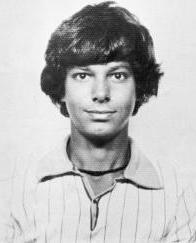 And if that is indeed the case, why not tell the story of one of the murdered MSI Youth Front members, Sergio Ramelli, 18; Francesco Cechin, 19; and Paolo Di Nella, 20, contemporaries of Alexander Caravillani (picture) and Mambro, who met their deaths by beating, shooting, and stabbings from Leftist brigands like the Autonomus Workers in the late ’70s and early ’80s? But of course, that will never happen. It does fit their agenda.
And if that is indeed the case, why not tell the story of one of the murdered MSI Youth Front members, Sergio Ramelli, 18; Francesco Cechin, 19; and Paolo Di Nella, 20, contemporaries of Alexander Caravillani (picture) and Mambro, who met their deaths by beating, shooting, and stabbings from Leftist brigands like the Autonomus Workers in the late ’70s and early ’80s? But of course, that will never happen. It does fit their agenda.
On February 11th 2012, De Camillis in direct contradiction to his supposed non-political stance is quoted, ‘Today, the city of Rome is right’, referring to the ‘post fascist’ Mayor Gianni Alemanno (24), MSI Youth Front veteran and graduate of Campo Hobbit (25), who was elected in April 2008 to the sound of Fascist-era songs and shouts of ‘Duce’. ‘Who are those who have called me to present the short film?’ asked Camillis, ‘They are Alemanno’s allies, Berlusconi’s Il Popolo della Liberta (26) . . . When it all came out I was in silence and I decided to just promote it, as I always do. But in the face of this attack, I mean to defend it at all costs. It is a ‘cultural action’ like opposition to gagging journalists. This is a way to silence not only the news but also the authorship of the image’.
There is clearly no intention of admitting even the possibility of bias or inaccuracy. De Camillis and his people are intent on staking their claim to the moral high ground. The following day, Mambro’s lawyer responded: ‘I write in the name and on behalf of the my client Francesca Mambro about the article published yesterday . . . I understand the presentation of the short film flatters the author. But I do not understand the claim that Mambro came back and shot him in the head. I do not know if Mr. De Camillis’s draws from insider sources? Caravillani, unfortunately died in the firefight because a bouncing bullet caused his immediate death. A bullet from an assault rifle that Mambro had never had in her possession, either as she entered the bank or as the NAR shot their way out. The scene is constructed in a way that will definitively condemn Mambro’. When Caravillani was struck, the judges concluded, it was because the young man, after he had run, suddenly found himself in the trajectory of shots fired between the various agents . . . Unfortunately, even the trailers of the short graphically depict Mambro in the disputed manner, astride a guy lying on the ground, shooting the coup de grace . . . I am sure, that in the name of the need to preserve the memory of the years of lead, both you and the newspaper for which he writes would give an account of this correction’. My personal advice is not to hold your breath for a retraction. Smear and distortion is their modus operandi.
Sentenced, for the killing of 9 individuals between May 1980 and March 1982, and the alleged involvement in the massacre of the Bologna bombing on 2nd August 1980, Mambro served 16 years in prison. Sometimes sharing a cell with Anna Laura Braghetti (27) (picture), of the Brigate Rosse, then after 1998 home detention until the 16th September 2008 when she was granted parole on the basis of ‘repeated and tireless dedication to reconciliation and peace with the victims’ families (28). Parole was ended on September 16th 2013 when the sentence was disposed of . . .’
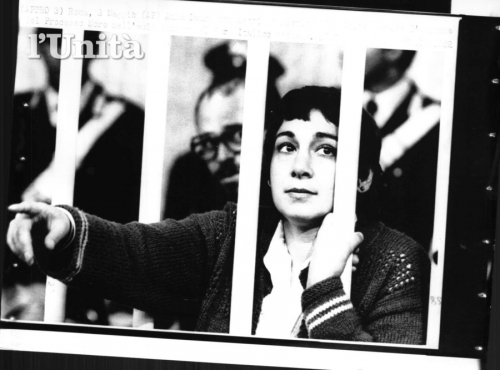
So to end has I began with a quote from a French man of letters, Alexandre Dumas (29), author of The Three Musketeers, ‘she is purely animal; she is the babooness of the Land of Nod; she is the female of Cain: Slay her!’ Or at least besmirch her reputation and disparage her cause so that no one will want to emulate her.
Notes
1. Along with Edgar Allan Poe, Baudelaire identified counter enlightenment philosopher Joseph de Maistre as his maître a penser and adopted aristocratic views. He argued ‘There are but three things worthy of respect: the priest, the warrior and the poet. To know, to kill and to create . . .’
2. Auguste Clesinger (1814-1883), French sculptor who created Bacchante, the Infant Hercules Strangling Snakes, Nereid, and Sappho, was an Officier de la Legion d’honneur.
3. Rudi Dutschke (1940-1979), disciple of Rosa Luxemburg and critical Marxist, survived Josef Bachmann’s attack, but drowned as consequence of having an epileptic fit in the bath.
4. Holger Meins, seized with Baader and Jan Carle-Raspe on the 1st June 1972, went on hunger strike, dying a mere 39kg in weight. He is a central character in the movie Moses und Aron by Jean-Marie Straub and Daniele Huillet (1974). Followed by a documentary about Meins called Starbuck — Holger Meins by Gerd Conradt (2002).
5. Bobby Sands (1954-81), a member of the Provisional Irish Republican Army (IRA) died whilst on hunger strike in HM Maze Prison. During the course of his protest he was elected to the British Parliament as an Anti-H Block candidate. He has been depicted in various films including Some Mother’s Son (1996) and Hunger (2008) and is celebrated in songs like Christy Moore’s The People’s Own MP’.
6. Stammheim is a high security prison in Stuttgart.
7. Four militants of the Commando Martyr Halime hijacked Lufthansa flight 181 on the 13th October 1977. The plane was stormed in Somalia by GSG-9 elite counter-terrorism units in an operation code-named Feuerzauber (Fire Magic).
8. Valentina Carnelutti was trained at the Theatre Active in Rome and the Mime Theatre Movement. She has also appeared in the movies Martina Singapore (1995), Ridley Scott’s Hannibal (2001) and The Best of Youth (2003).
9. Santo Della Volpe is a professional journalist who covered the first Gulf War and is a managing editor on Italy’s TG3.
10. The term “Years of Lead” was used to describe the socio-political turmoil in Italy between the 1960s to the 1980s. It is thought that the reference originated from a movie called Marianne and Julianne by Margarethe Von Trotta. The Italian title was Anni di Piombo, literally years of lead. A later linked feature called The German Sisters (1981) became a classic of new German cinema, sympathetic to Gudrun Ensslin and dedicated to women’s civil rights.
11. Born in 1958, Giuseppe Valerio ‘Giusva’ Fioravanti, was a former child actor, who became a leader in the NAR and has been romantically linked with Mambro since 1979. While serving his prison sentence he made a documentary on Rome’s Rebibbia prison, Piccoli Ergastoli, Little Life Sentences (1997).
12. Occorsio Vittorio (1929-1976) oversaw the trial of those indicted for the Piazza Fontana bombing.
13. Maria Amato was an Italian magistrate assassinated by NAR member Gilberto Cavallini in 1980.
14. Francesco Cossiga, Italy’s 42nd Prime Minister and 8th President between 1985-1992.
15. The Banda della Magliana was a criminal network operating out of Lazio, named after the district from where most of their leaders originated. Their activities included the murder of the banker Roberto Calvi, the kidnapping of Emanuela Orlandi and the attack on John-Paul II.
16. Licio Gelli, an Italian financier, heavily involved in the Banco Ambrosiano scandal and the venerable master of the P2 Lodge.
17. The Propaganda Due (P2) Lodge was under the jurisdiction of the Grand Orient of Italy implicated in numerous crimes and mysteries, often referred to as a ‘state within the state’.
18. Operation Gladio was the code-name for NATO’s ‘stay behind’ activity should the Warsaw Pact mount an invasion of western Europe. The name Gladio came from the word gladius, a type of short Roman sword.
19. The Ustica Massacre is still a subject of some controversy. Whether or not a French naval aircraft brought the plane down with a missile, or a bomb was set off in the toilet as evidenced by forensic experts, it is known that the Libyan leader Colonel Gadaffi was in the same airspace at the time. Linking the Ustica and Bologna incidents became common in some conspiracy circles.
20. Giorgio Almirante (1914-1988) studied under Giovanni Gentile, the eminent pro-Fascist philosopher and wrote for the Rome-based fascist journal Il Tevere. He once described Julius Evola as ‘Our Marcuse, only better’. Almirante was suspected of safe-housing Carlo Cicuttini, a MSI leader in the Monfalcone area and later a member of the Ordine Nuovo, a suspect convicted in absentia for his part in the Peteano di Sagrado killings. Almirante and his rival Pino Rauti often clashed bitterly on the tactics and methodology used by the Italian Right.
21. Giorgi Vale was killed in a shoot-out with police.
22. The Terza Posizione emerged from the national student’s movement under Roberto Nistri, who was imprisoned from 1982 to the early 2000s.
23. The San Giovanni Riots of the 15th October were violent street protests by Black Bloc Left extremists.
24. Gianni Alemanno was born in Bari in 1958. He is a former secretary of the MSI’s Youth Wing, who entered the Chamber of Deputies representing Lazio, serving as Rome’s 63rd Mayor between 2008-2013 and a Minister of Agriculture under Silvio Berlusconi. He is married to Isabella Rauti, the daughter of Pino Rauti.
25. Campo Hobbit was named after Catholic writer J. R. R. Tolkien’s first novel. It was an alternative cultural and musical ‘happening’ linked to Elemire Zolla who wrote The Arcana of Power 1960-2000. Held in various locations, the first in Montesarchio, it boasted its own Manifesto and became a ‘field school’ for the Italian New Right and thinkers like Pino Rauti and Marco Tarchi.
26. Berlusconi’s Il Poplo della Liberta was closely aligned with Gianfranco Fini’s conservative National Alliance and Umberto Bossi’s Lega Nord.
27. Anna Laura Braghetti owned the apartment where Aldo Moro was imprisoned. She is also the subject of her own book Prisoner which influenced Marco Bellocchio’s film Good Morning, Night (2003).
28. Mambro currently works for the Italian NGO Hands off Cain, an association campaigning against the death penalty linked to the Libertarian Radical Party.
29. Alexandre Dumas (1802-1870). It was said of Dumas, that his ‘tongue was like a windmill — once set in motion, you never knew when it would stop, especially if the theme was himself’ — Watts Phillips, English illustrator, playwright and novelist.



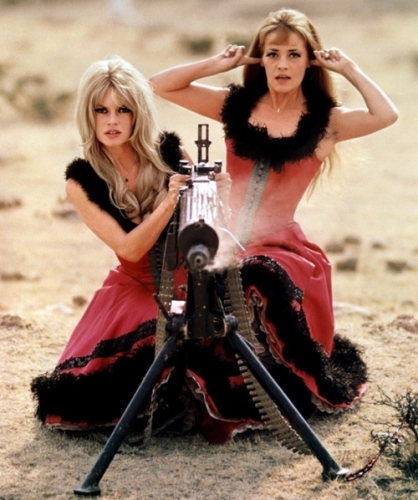

 del.icio.us
del.icio.us
 Digg
Digg















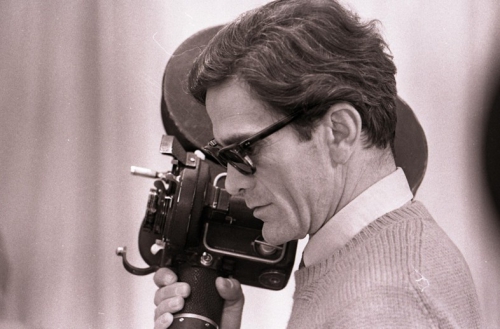
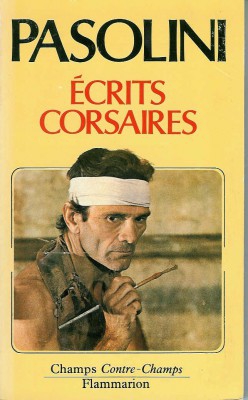 Pasolini était un homme du refus. Mais pas circonstancié et tiède : « Pour être efficace, le refus ne peut être qu’énorme et non mesquin, total et non partiel, absurde et non rationnel. » (Nous sommes tous en danger) C’est tout ou rien. Pasolini était CONTRE. Contre la droite cléricale-fasciste et démocrate-chrétienne mais aussi contre les illusions de son propre camp, celui du gauchisme (cette « maladie verbale du marxisme ») et de ses petit-bourgeois d’enfants.
Pasolini était un homme du refus. Mais pas circonstancié et tiède : « Pour être efficace, le refus ne peut être qu’énorme et non mesquin, total et non partiel, absurde et non rationnel. » (Nous sommes tous en danger) C’est tout ou rien. Pasolini était CONTRE. Contre la droite cléricale-fasciste et démocrate-chrétienne mais aussi contre les illusions de son propre camp, celui du gauchisme (cette « maladie verbale du marxisme ») et de ses petit-bourgeois d’enfants.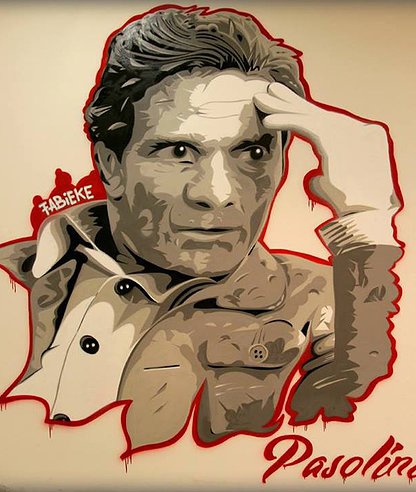 La télévision étant, pour lui, le bras armé de cette aliénation de masse. « La télévision, loin de diffuser des notions fragmentaires et privées d’une vision cohérente de la vie et du monde, est un puissant moyen de diffusion idéologique, et justement de l’idéologie consacrée de la classe dominante. » (Contre la télévision) Pasolini découvre, horrifié, la propagande moderne du divertissement de masse dont la bêtise n’a d’égale que la vulgarité, sous couvert d’un manichéisme moral mis au goût du jour : « Il émane de la télévision quelque chose d’épouvantable. Quelque chose de pire que la terreur que devait inspirer, en d’autres siècles, la seule idée des tribunaux spéciaux de l’Inquisition. Il y a, au tréfonds de ladite « télé », quelque chose de semblable, précisément, à l’esprit de l’Inquisition : une division nette, radicale, taillée à la serpe, entre ceux qui peuvent passer et ceux qui ne peuvent pas passer. […] Et c’est en cela que la télévision accomplit la discrimination néo-capitaliste entre les bons et les méchants. Là réside la honte qu’elle doit cacher, en dressant un rideau de faux « réalismes ». » (Contre la télévision)
La télévision étant, pour lui, le bras armé de cette aliénation de masse. « La télévision, loin de diffuser des notions fragmentaires et privées d’une vision cohérente de la vie et du monde, est un puissant moyen de diffusion idéologique, et justement de l’idéologie consacrée de la classe dominante. » (Contre la télévision) Pasolini découvre, horrifié, la propagande moderne du divertissement de masse dont la bêtise n’a d’égale que la vulgarité, sous couvert d’un manichéisme moral mis au goût du jour : « Il émane de la télévision quelque chose d’épouvantable. Quelque chose de pire que la terreur que devait inspirer, en d’autres siècles, la seule idée des tribunaux spéciaux de l’Inquisition. Il y a, au tréfonds de ladite « télé », quelque chose de semblable, précisément, à l’esprit de l’Inquisition : une division nette, radicale, taillée à la serpe, entre ceux qui peuvent passer et ceux qui ne peuvent pas passer. […] Et c’est en cela que la télévision accomplit la discrimination néo-capitaliste entre les bons et les méchants. Là réside la honte qu’elle doit cacher, en dressant un rideau de faux « réalismes ». » (Contre la télévision)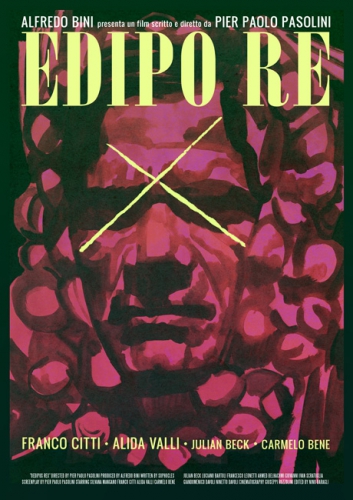 Si le fascisme avait détruit la liberté des hommes, il n’avait pas dévasté les racines culturelles de l’Italie. Réussissant le tour de force de combiner l’asservissement aux modes et aux objets à la destruction de la culture ancestrale de son pays, le consumérisme lui apparut comme, pire que le fascisme, le véritable mal moderne à combattre. Un mal qui s’est immiscé dans le comportement de tous les Italiens avec une rapidité folle : en l’espace de quelques années, l’uniformisation était telle qu’il était désormais impossible de distinguer, par exemple, un fasciste d’un anti-fasciste. Il n’y a plus que des bourgeois bêtes et vulgaires dans un pays dégradé et stérile.
Si le fascisme avait détruit la liberté des hommes, il n’avait pas dévasté les racines culturelles de l’Italie. Réussissant le tour de force de combiner l’asservissement aux modes et aux objets à la destruction de la culture ancestrale de son pays, le consumérisme lui apparut comme, pire que le fascisme, le véritable mal moderne à combattre. Un mal qui s’est immiscé dans le comportement de tous les Italiens avec une rapidité folle : en l’espace de quelques années, l’uniformisation était telle qu’il était désormais impossible de distinguer, par exemple, un fasciste d’un anti-fasciste. Il n’y a plus que des bourgeois bêtes et vulgaires dans un pays dégradé et stérile. 
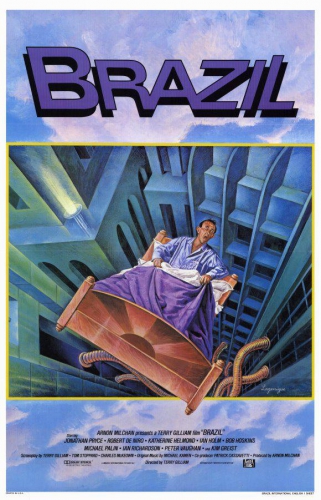
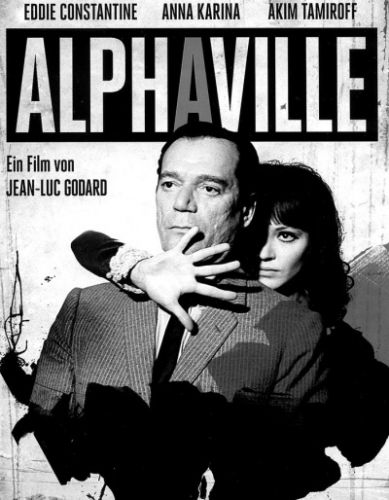


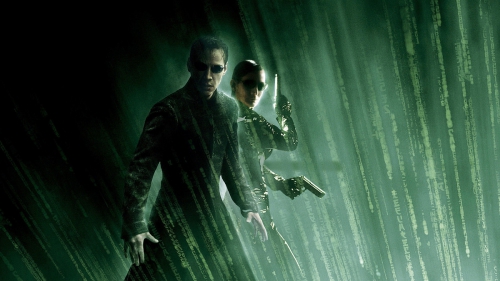

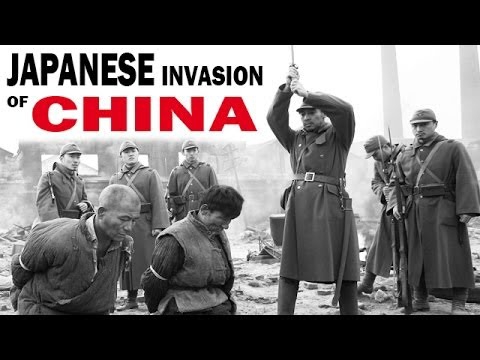 Otherwise, his war was a kind of black hole in family life. But for boys like me, that mattered less than you might expect for a simple reason: we already knew what our fathers had experienced at war. We had seen it at the movies, often with those fathers sitting silently beside us. We had seen John Wayne
Otherwise, his war was a kind of black hole in family life. But for boys like me, that mattered less than you might expect for a simple reason: we already knew what our fathers had experienced at war. We had seen it at the movies, often with those fathers sitting silently beside us. We had seen John Wayne 


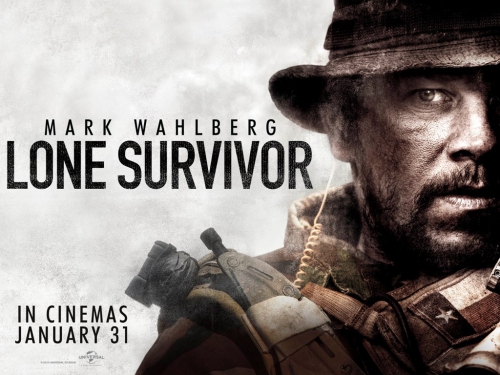
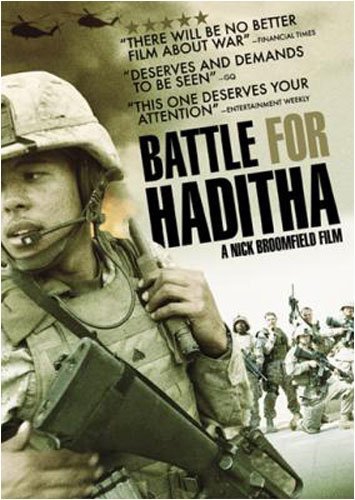 There are indeed exceptions to war porn, but don’t fool yourself, size matters. How many people have seen American Sniper, The Hurt Locker, or Zero Dark Thirty? By comparison, how many saw the anti-war Iraq War film
There are indeed exceptions to war porn, but don’t fool yourself, size matters. How many people have seen American Sniper, The Hurt Locker, or Zero Dark Thirty? By comparison, how many saw the anti-war Iraq War film 











 De soubresaut en soubresaut, de rémission (Napoléon) en nouvel accès de fièvre (la Commune), notre « opium » des peuples de France s’enlise, se délite, se désagrège, se décompose, se métamorphose. Péguy et tant d’autres n’y pourront rien. Un grand coup lui est porté par la loi de séparation de l’Église et de l’État en 1905.
De soubresaut en soubresaut, de rémission (Napoléon) en nouvel accès de fièvre (la Commune), notre « opium » des peuples de France s’enlise, se délite, se désagrège, se décompose, se métamorphose. Péguy et tant d’autres n’y pourront rien. Un grand coup lui est porté par la loi de séparation de l’Église et de l’État en 1905.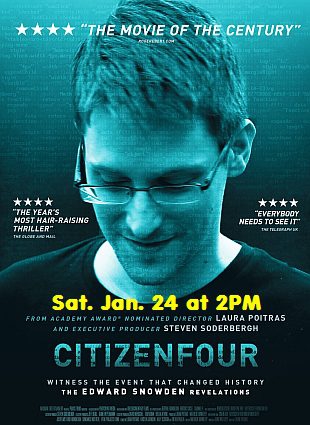

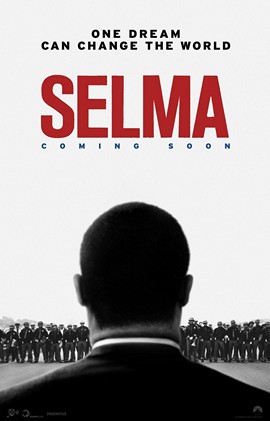 Selma will be mentioned in the history books but will not get the attention it really deserves for the relevance it should have for a new generation of youth. There will be no mention in the history books regarding the importance of Edward Snowden because his story not only instructs a larger public but indicts the myth of American democracy. Yet, American Sniper resembles a familiar narrative of false heroism and state violence for which thousands of pages will be written as part of history texts that will provide the pedagogical context for imposing on young people a mode of hyper-masculinity built on the false notion that violence is a sacred value and that war is an honorable ideal and the ultimate test of what it means to be a man. The stories a society tells about itself are a measure of how it values itself, the ideals of democracy, and its future.
Selma will be mentioned in the history books but will not get the attention it really deserves for the relevance it should have for a new generation of youth. There will be no mention in the history books regarding the importance of Edward Snowden because his story not only instructs a larger public but indicts the myth of American democracy. Yet, American Sniper resembles a familiar narrative of false heroism and state violence for which thousands of pages will be written as part of history texts that will provide the pedagogical context for imposing on young people a mode of hyper-masculinity built on the false notion that violence is a sacred value and that war is an honorable ideal and the ultimate test of what it means to be a man. The stories a society tells about itself are a measure of how it values itself, the ideals of democracy, and its future. 
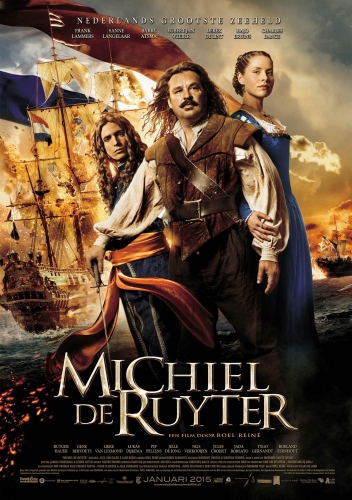
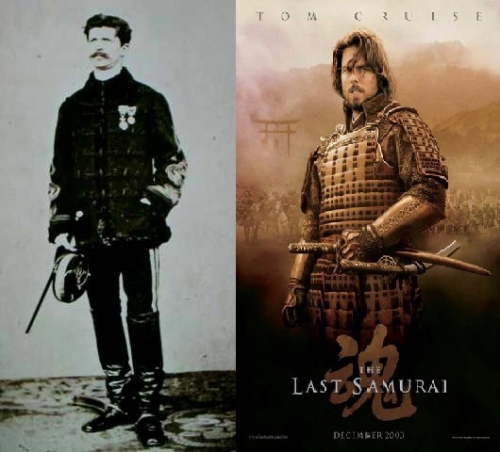
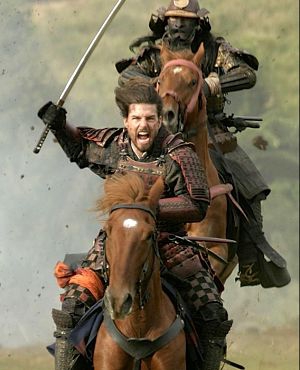 D'un point de vue historique, Saigō Takamori (1827-1877), incarné par Watanabe Ken, a bien pris les armes contre l'empereur Meiji en 1876. Saigô s'est longtemps opposé au shogunat et a apporté son soutien à l'empereur pendant la guerre du Boshin (1868-69), mais n’acceptera pas les profondes réformes structurelles de l'État et de la société nippone entreprises après la restauration impériale. La rupture sera consommée lorsque le projet d'invasion de la Corée qu'il propose sera rejeté (1873). Replié sur ses terres, il prendra la tête d'une insurrection qui sera réprimée par l'armée impériale. Vaincu militairement, Saigô se suicide selon les règles du code de l'honneur des samouraïs. Toutefois, ce « dernier samouraï » n'avait pas, quel dommage, de conseiller militaire américain.
D'un point de vue historique, Saigō Takamori (1827-1877), incarné par Watanabe Ken, a bien pris les armes contre l'empereur Meiji en 1876. Saigô s'est longtemps opposé au shogunat et a apporté son soutien à l'empereur pendant la guerre du Boshin (1868-69), mais n’acceptera pas les profondes réformes structurelles de l'État et de la société nippone entreprises après la restauration impériale. La rupture sera consommée lorsque le projet d'invasion de la Corée qu'il propose sera rejeté (1873). Replié sur ses terres, il prendra la tête d'une insurrection qui sera réprimée par l'armée impériale. Vaincu militairement, Saigô se suicide selon les règles du code de l'honneur des samouraïs. Toutefois, ce « dernier samouraï » n'avait pas, quel dommage, de conseiller militaire américain.
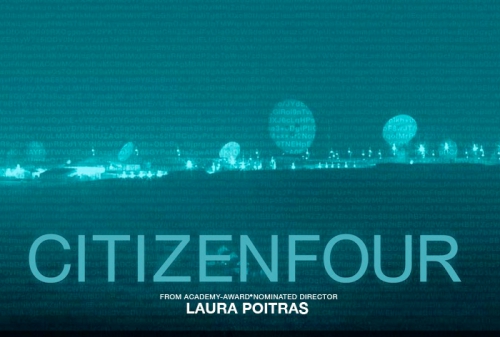
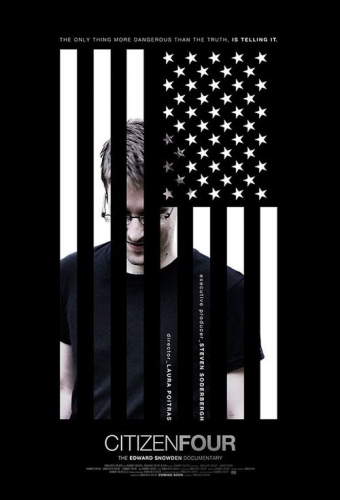 A second – equally crucial – question turns on the already-deteriorating character of public discourse: feeble resistance to technological authoritarianism in the U.S. is palpable and alarming. Congress has done nothing to tame the juggernaut, while the Obama administration remains essentially content with dancing around the issue, obsessed with Snowden’s notoriety (and imputed criminality). Despite what has been revealed by Snowden – and Bamford and Binney before him – few dare to speak out, surely fearful of being derided as “soft on terrorism”. Further, NSA programs are so “deep”, so shrouded in mystery, that hardly anyone seems able to penetrate the technological fortress sufficiently to fathom what is taking place. And of course NSA work is in highly-classified, including even its budget (estimated at possibly $20 billion yearly).
A second – equally crucial – question turns on the already-deteriorating character of public discourse: feeble resistance to technological authoritarianism in the U.S. is palpable and alarming. Congress has done nothing to tame the juggernaut, while the Obama administration remains essentially content with dancing around the issue, obsessed with Snowden’s notoriety (and imputed criminality). Despite what has been revealed by Snowden – and Bamford and Binney before him – few dare to speak out, surely fearful of being derided as “soft on terrorism”. Further, NSA programs are so “deep”, so shrouded in mystery, that hardly anyone seems able to penetrate the technological fortress sufficiently to fathom what is taking place. And of course NSA work is in highly-classified, including even its budget (estimated at possibly $20 billion yearly).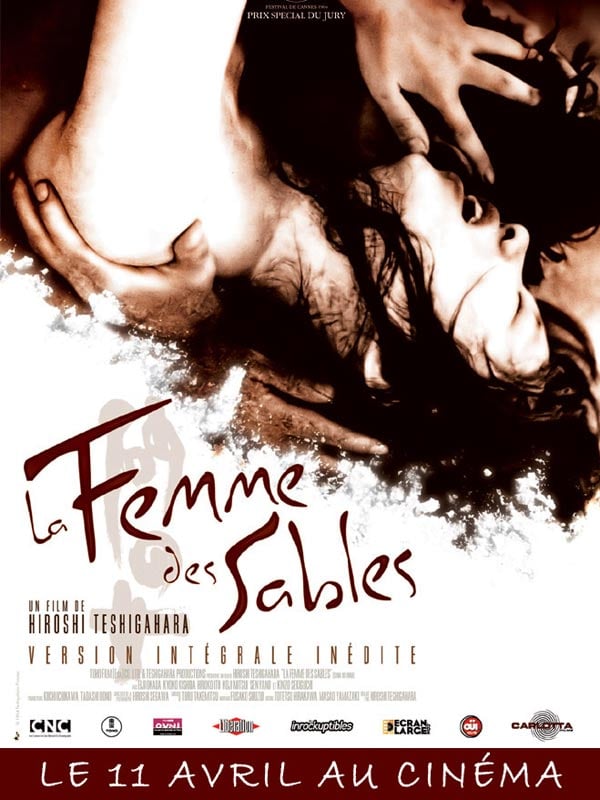
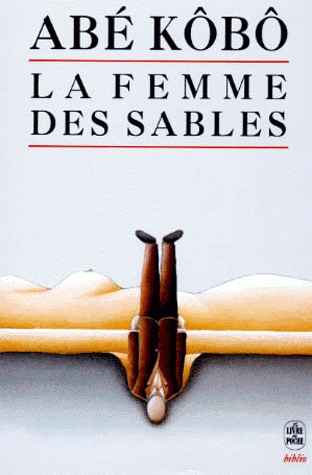 La deuxième des quatre œuvres issues de la collaboration de Teshigahara avec l’écrivain Kobo Abe, La Femme des Sables, est son long métrage le plus célèbre. C’est aussi certainement celui qui laisse l’impression la plus forte et la plus durable.
La deuxième des quatre œuvres issues de la collaboration de Teshigahara avec l’écrivain Kobo Abe, La Femme des Sables, est son long métrage le plus célèbre. C’est aussi certainement celui qui laisse l’impression la plus forte et la plus durable.
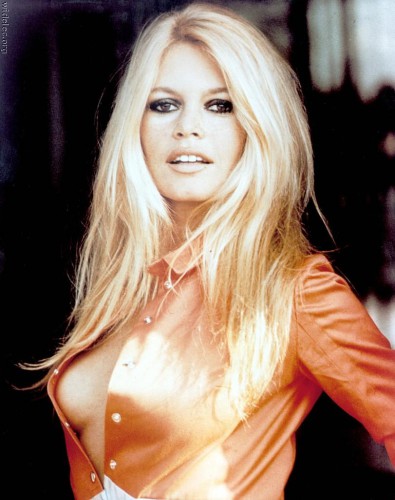
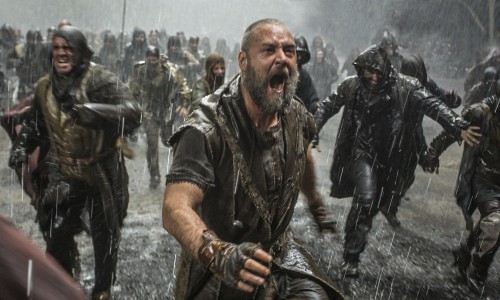

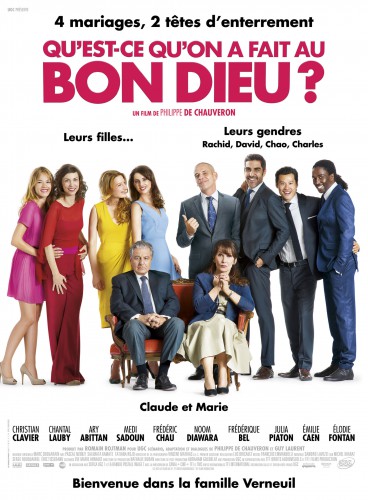
 Ce racisme sans conséquences n’est plus d’actualité. C’est une France où l’on accueille l’autre avec méfiance et bienveillance mais où l’autre ne tente pas d‘imposer, de dominer. On est très loin des « racailles » de banlieue même si elles sont présentes, car le jeune algérien marié à une fille Verneuil est avocat et on le voit défendre, commis d’office, ceux qu’il qualifie de « capuches sans cerveaux ». Une France avec une diversité marginale et exotique et pas, comme c’est le cas, une diversité de peuplement et de substitution de populations et de mode de vie. La comédie est exploitée par les antiracistes politiques pour prouver que le pays a changé et que finalement, il faut accepter dans la bonne humeur d’être tous des Verneuil, des familles «Benneton » comme le dit, lors d’une messe, un habitant de la localité.
Ce racisme sans conséquences n’est plus d’actualité. C’est une France où l’on accueille l’autre avec méfiance et bienveillance mais où l’autre ne tente pas d‘imposer, de dominer. On est très loin des « racailles » de banlieue même si elles sont présentes, car le jeune algérien marié à une fille Verneuil est avocat et on le voit défendre, commis d’office, ceux qu’il qualifie de « capuches sans cerveaux ». Une France avec une diversité marginale et exotique et pas, comme c’est le cas, une diversité de peuplement et de substitution de populations et de mode de vie. La comédie est exploitée par les antiracistes politiques pour prouver que le pays a changé et que finalement, il faut accepter dans la bonne humeur d’être tous des Verneuil, des familles «Benneton » comme le dit, lors d’une messe, un habitant de la localité. De son coté Le Monde constate. « Le film de Philippe de Chauveron, fait actuellement exploser tous les compteurs du box-office français. Accueil critique ? Inexistant, aucune projection de presse n’ayant précédé sa sortie. Bouche-à-oreille ? Exceptionnel, à tel point que les deux plus gros succès du cinéma français, Intouchables (19,44 millions d’entrées) et même Bienvenue chez les Ch’tis (20,48 millions) ne paraissent pas hors d’atteinte. Visible sur Internet, l’efficace bande-annonce laisse présager le pire : 1,58 min de clichés raciaux ou racistes, on ne sait trop, en tous genres. Quel est donc ce film qui fait salle comble aussi bien à Paris qu’en régions ? Un ersatz cinématographique des thèmes chers au Front national ? L’affaire est plus compliquée. »
De son coté Le Monde constate. « Le film de Philippe de Chauveron, fait actuellement exploser tous les compteurs du box-office français. Accueil critique ? Inexistant, aucune projection de presse n’ayant précédé sa sortie. Bouche-à-oreille ? Exceptionnel, à tel point que les deux plus gros succès du cinéma français, Intouchables (19,44 millions d’entrées) et même Bienvenue chez les Ch’tis (20,48 millions) ne paraissent pas hors d’atteinte. Visible sur Internet, l’efficace bande-annonce laisse présager le pire : 1,58 min de clichés raciaux ou racistes, on ne sait trop, en tous genres. Quel est donc ce film qui fait salle comble aussi bien à Paris qu’en régions ? Un ersatz cinématographique des thèmes chers au Front national ? L’affaire est plus compliquée. » La suite attendue du film « 300 » de Zach Snyder, intitulée « l’Avènement d’un Empire » (Rise of an Empire), est récemment sortie sur nos écrans. A la musique, Tyler Bates a cédé la place à Junkie XL, qui nous propose une bande originale brillante, finissant en apothéose en mêlant son dernier morceau à une mélodie de Black Sabbath.
La suite attendue du film « 300 » de Zach Snyder, intitulée « l’Avènement d’un Empire » (Rise of an Empire), est récemment sortie sur nos écrans. A la musique, Tyler Bates a cédé la place à Junkie XL, qui nous propose une bande originale brillante, finissant en apothéose en mêlant son dernier morceau à une mélodie de Black Sabbath.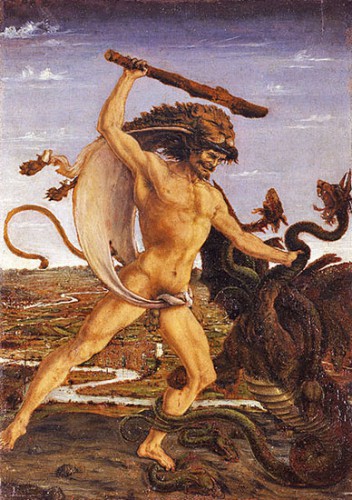
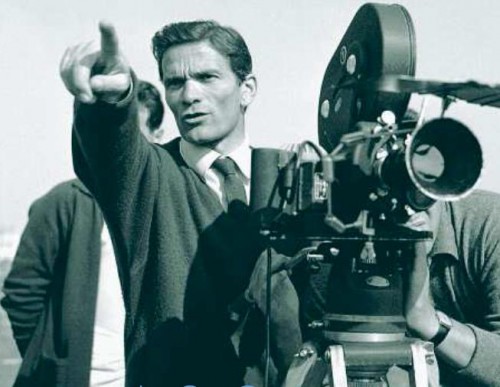




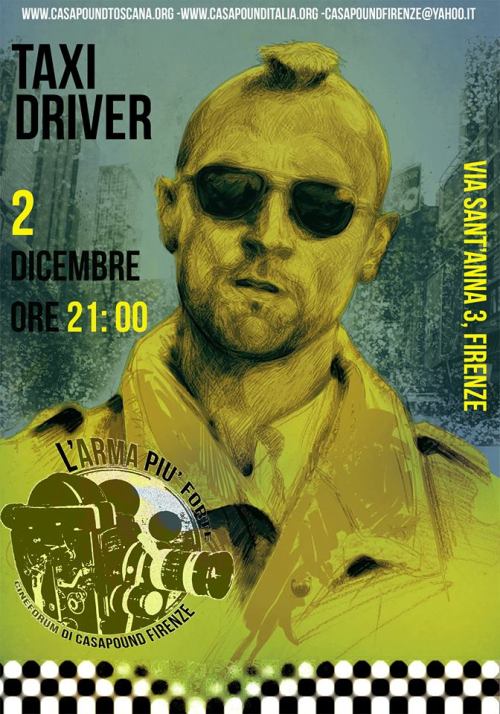
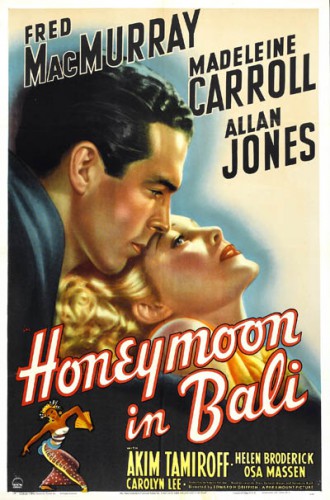

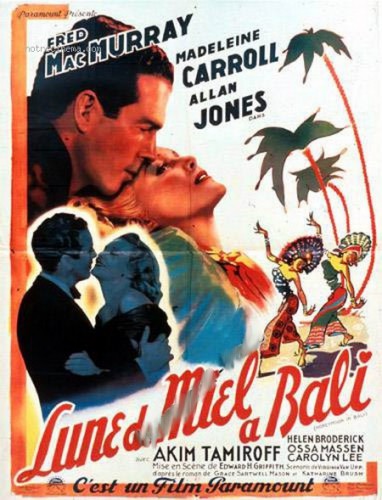 The beta rival for Carroll’s affection is Eric Sinclair, played by Welsh American singer-actor Allan Jones, a professional opera singer who has known Carroll for many years. His attitudes toward marriage are much different from MacMurray’s. He believes a woman can have marriage and a career both, as Carroll tells MacMurray while the three are returning to her apartment in Eric’s chauffeur-driven car. “He even believes,” she adds, “that if a [married] woman wanted to have her own apartment, and he [the husband] his own apartment . . .” her voice trailing off lamely because the words sound so foolish when spoken aloud. Eric thinks MacMurray’s view of marriage “sounds a bit barbaric.” (At another point in the film, though, he wonders, “What’s this guy got? What’s his technique?”) When MacMurray escorts Carroll to her door, she scolds him, saying, “That was rude of you, trying to hold my hand in another man’s car.”
The beta rival for Carroll’s affection is Eric Sinclair, played by Welsh American singer-actor Allan Jones, a professional opera singer who has known Carroll for many years. His attitudes toward marriage are much different from MacMurray’s. He believes a woman can have marriage and a career both, as Carroll tells MacMurray while the three are returning to her apartment in Eric’s chauffeur-driven car. “He even believes,” she adds, “that if a [married] woman wanted to have her own apartment, and he [the husband] his own apartment . . .” her voice trailing off lamely because the words sound so foolish when spoken aloud. Eric thinks MacMurray’s view of marriage “sounds a bit barbaric.” (At another point in the film, though, he wonders, “What’s this guy got? What’s his technique?”) When MacMurray escorts Carroll to her door, she scolds him, saying, “That was rude of you, trying to hold my hand in another man’s car.”
 Le « Grand Jacques »… Non, nous n’évoquerons pas ici Jacques Doriot mais un autre Jacques qui fut parfois nommé tel de par son singulier parcours criminel : Mesrine, l’homme qui fut, dans les années 1970, celui après qui couraient toutes les polices de France et fut alors désigné « ennemi public n°1 ». Il y a 5 ans, le cinéaste français Jean-François Richet consacra au légendaire bandit deux films de grande qualité dont nous allons parler maintenant. Ce n’est pas la première fois que Mesrine est honoré au cinéma (il l’a déjà été plusieurs fois) mais l’on constate que l’intérêt - la fascination ?- est toujours vif envers certaines grandes figures du banditisme de ces années-là, pensons par exemple à Albert Spaggiari… Pourquoi ? Car dans notre époque morne et aseptisée, l’audace et les prises de risque qui furent réelles de la part de ces hommes qui détroussaient les riches et les banques font parfois que l’on a tendance à voir en eux de grands rebelles qui osaient décider de ce qu’était leur liberté et de s’opposer d’une certaine façon à la société de leur temps. Quoi qu’on pense de leur parcours, il laisse rarement indifférent.
Le « Grand Jacques »… Non, nous n’évoquerons pas ici Jacques Doriot mais un autre Jacques qui fut parfois nommé tel de par son singulier parcours criminel : Mesrine, l’homme qui fut, dans les années 1970, celui après qui couraient toutes les polices de France et fut alors désigné « ennemi public n°1 ». Il y a 5 ans, le cinéaste français Jean-François Richet consacra au légendaire bandit deux films de grande qualité dont nous allons parler maintenant. Ce n’est pas la première fois que Mesrine est honoré au cinéma (il l’a déjà été plusieurs fois) mais l’on constate que l’intérêt - la fascination ?- est toujours vif envers certaines grandes figures du banditisme de ces années-là, pensons par exemple à Albert Spaggiari… Pourquoi ? Car dans notre époque morne et aseptisée, l’audace et les prises de risque qui furent réelles de la part de ces hommes qui détroussaient les riches et les banques font parfois que l’on a tendance à voir en eux de grands rebelles qui osaient décider de ce qu’était leur liberté et de s’opposer d’une certaine façon à la société de leur temps. Quoi qu’on pense de leur parcours, il laisse rarement indifférent.